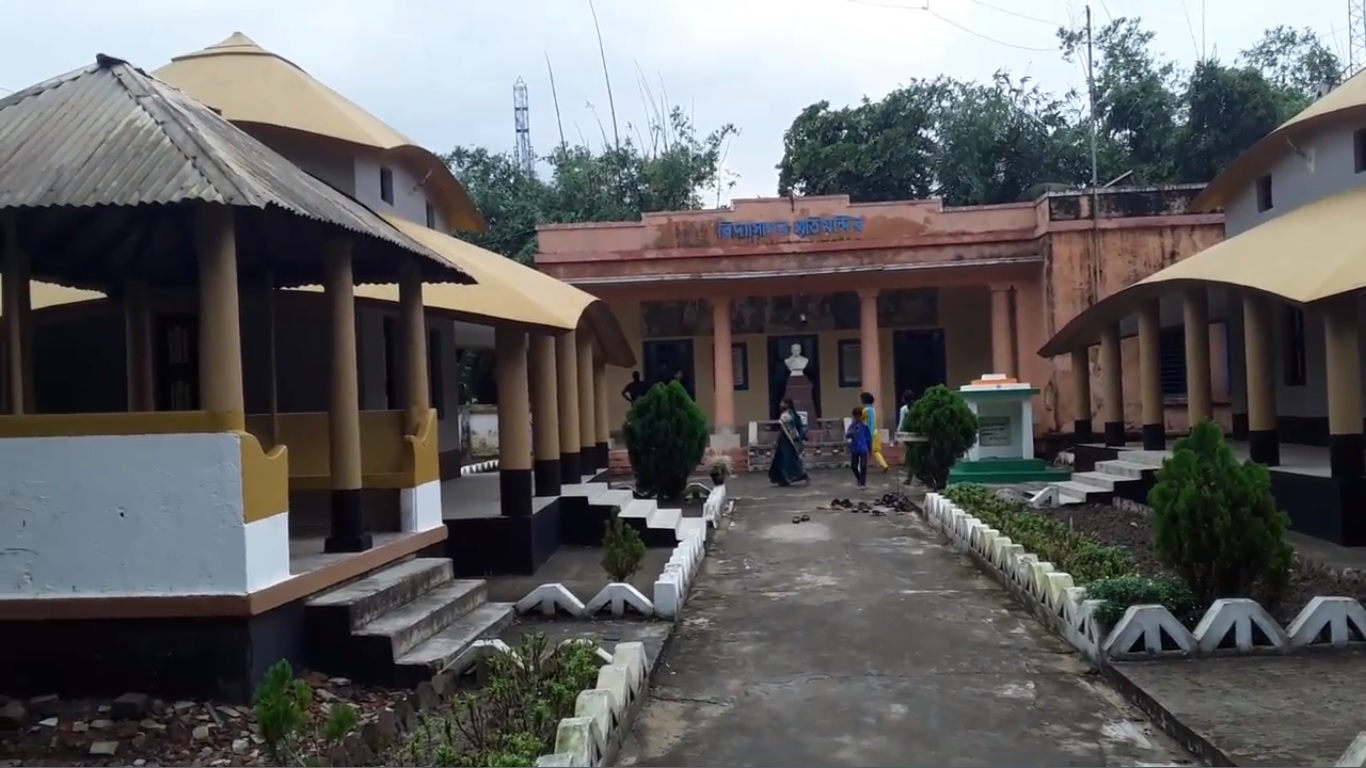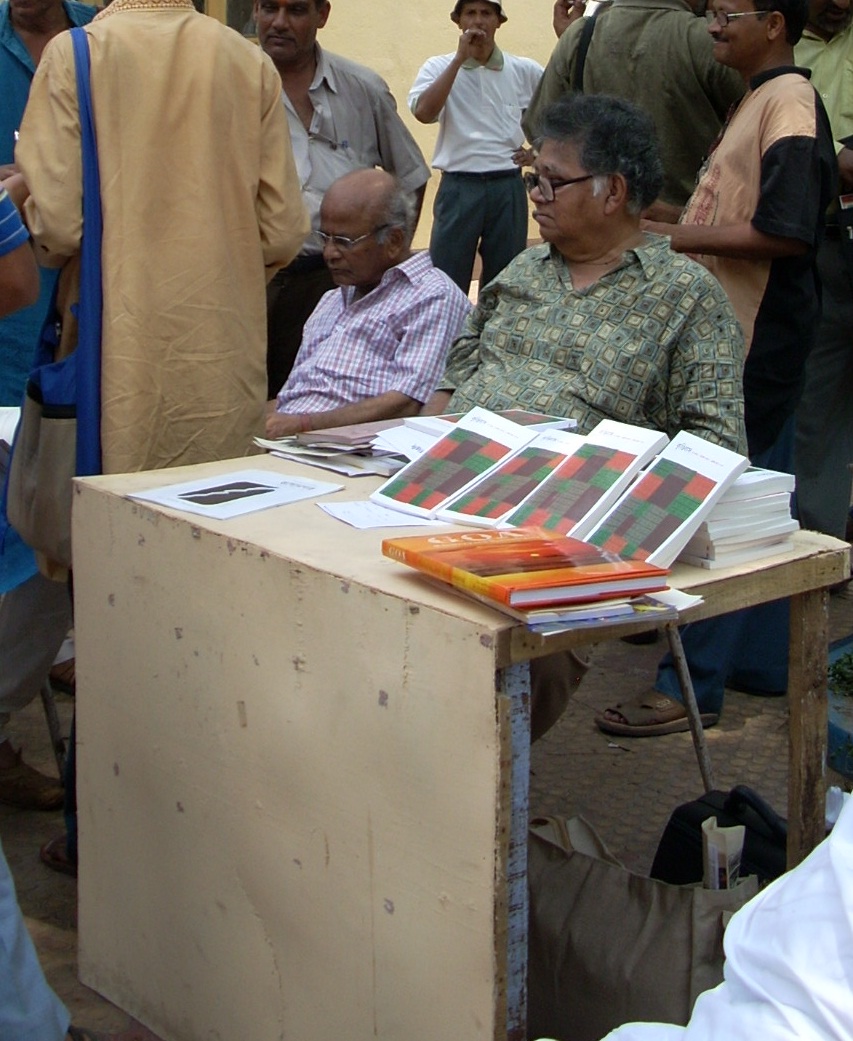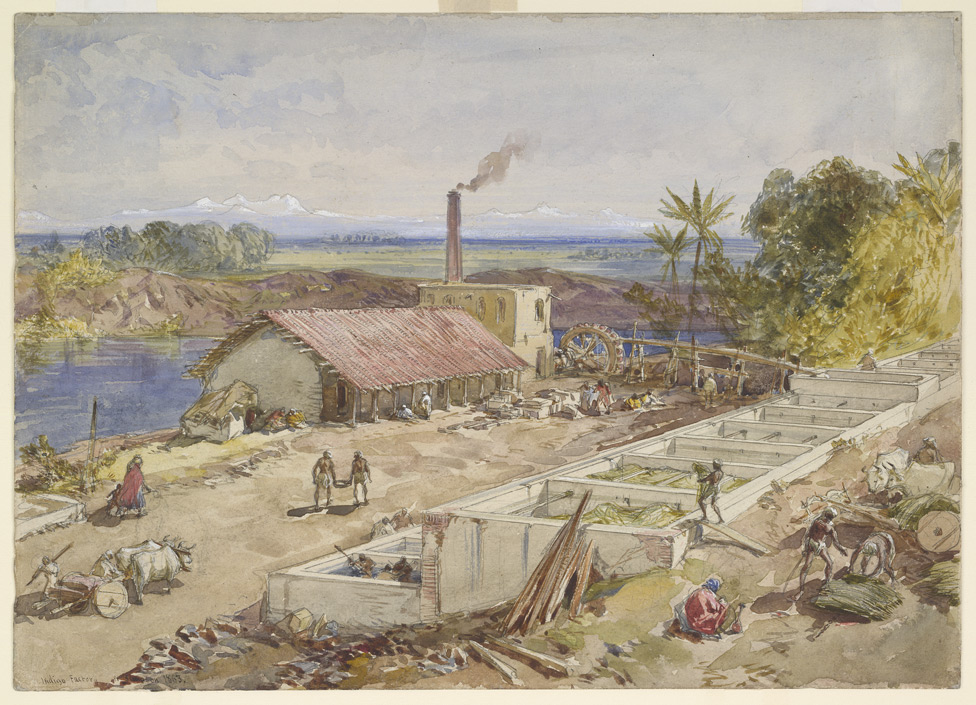|
Dinabandhu Mitra
Dinabandhu Mitra (1830 – 1 November 1873) was a Bengali writer and dramatist. He is notable for his play ''Nil Darpan'' (1860). Early life Mitra was born at Chowberia village in Gopalnagar P.S., North 24 Parganas and was the son of Kalachand Mitra. His given name was Gandharva Narayan, but he changed it to Dinabandhu Mitra. His education started at a village pathshala. His father arranged a job for him on a zamindar's estate in 1840. But the small boy fled to Kolkata, where he started working in the house of his uncle, Nilmani Mitra. Around 1846, he was admitted to the free school run by James Long. Dinabandhu was a bright student and won a number of scholarships. In 1850, he enrolled in Hindu College and was awarded scholarships for academic excellence. However, he did not appear in his last examination, and, instead, started working as a postmaster in Patna in 1855. He served in various posts in the Postal Department in Krishnanagar, Nadia, Dhaka and Orissa. In 1870, he was ... [...More Info...] [...Related Items...] OR: [Wikipedia] [Google] [Baidu] |
Gopalnagar, North 24 Parganas
Gopalnagar is a village and a gram panchayat in the Bangaon CD block in the Bangaon subdivision of the North 24 Parganas district in the state of West Bengal, India. Geography Location Gopalnagar is located at . Area overview The area shown in the map was a part of Jessore district from 1883. At the time of Partition of Bengal (1947) the Radcliffe Line placed the police station areas of Bangaon and Gaighata of Jessore district in India and the area was made a part of 24 Parganas district. The renowned novelist Bibhutibhushan Bandopadhyay (of ''Pather Panchali'' fame) belonged to this area and many of his writings portray his experience in the area. It is a flat plain located in the lower Ganges Delta. In the densely populated area, 16.33% of the population lives in the urban areas and 83.67% lives in the rural areas. Note: The map alongside presents some of the notable locations in the subdivision. All places marked in the map are linked in the larger full screen map. Civ ... [...More Info...] [...Related Items...] OR: [Wikipedia] [Google] [Baidu] |
Jamalaye Jibanta Manush
''Jamalaye Jibanta Manush'' () is a 1958 Indian Bengali-language romantic comedy film directed by Prafulla Chakraborty and produced by Ananta Singh, member of Chittagong armoury raid. This film, based on the novel of Dinabandhu Mitra in the same name, was released in 1958 in the banner of Rajkumari Chitramandir. It was remade in 1960 as '' Devanthakudu'' in Telugu and in Tamil as ''Naan Kanda Sorgam'' by C. Pullayya. Plot Village boy Siddheswar (alias Sidhu) loves Madhuri, the daughter of Hari. Hari, the rich village headman, will never accept Sidhu as a son-in-law. When they decide to marry, Hari sends some henchmen who almost murder Sidhu. Shocked, Madhuri commits suicide and Sidhu is mistakenly sent to hell while he is still alive. He starts a revolution in hell and heaven, and chases the Hindu God of Death, Yamraj and Chitragupta out of hell with the help of his dead pet bull. He eradicates outdated rules and norms that were framed by Yamraj, and his head clerk Chitragup ... [...More Info...] [...Related Items...] OR: [Wikipedia] [Google] [Baidu] |
Bankimchandra Chattopadhyay
Bankim Chandra Chatterjee (also Chattopadhayay) CIE (26 or 27 June 1838 – 8 April 1894) was an Indian novelist, poet, Essayist and journalist.Staff writer"Bankim Chandra: The First Prominent Bengali Novelist" ''The Daily Star'', 30 June 2011 He was the author of the 1882 Bengali language novel ''Anandamath'', which is one of the landmarks of modern Bengali and Indian literature. He was the composer of ''Vande Mataram'', written in highly sanskritized Bengali, personifying Bengal as a mother goddess and inspiring activists during the Indian Independence Movement. Chattopadhayay wrote fourteen novels and many serious, serio-comic, satirical, scientific and critical treatises in Bengali. He is known as ''Sahitya Samrat'' (Emperor of Literature) in Bengali. Biography Chattopadhayay is widely regarded as a key figure in literary renaissance of Bengal as well as the broader Indian subcontinent. Some of his writings, including novels, essays, and commentaries, were a breakaway ... [...More Info...] [...Related Items...] OR: [Wikipedia] [Google] [Baidu] |
Kaliprasanna Singha
Kaliprasanna Sinha ( bn, কালীপ্রসন্ন সিংহ; 23 February 1841 – 24 July 1870), well known by his pen name Hootum Pyancha, was a Bengali author, playwright, and philanthropist. His most famous work was the translation of the ancient Hindu epic Mahabharata into Bengali. Singha's book '' Hootum Pyanchar Naksha'' (literally "Sketches by a Watching Owl"), a compilation of satirical social sketches, is another work that is noted for reflecting Bengalee urban society of the time. He is also remembered as a philanthropist who helped several people and movements in distress. Early life Though the exact date of Kaliprasanna Sinha's birth is debatable, on 24 February 1840, the Calcutta Courier published the news that celebrations were held on 23 February 1840 on the occasion of the birth of the son of Nandalal Sinha of Jorasanko. The confusion about his year of birth is because researchers initially found his death announcement where it was stated that he di ... [...More Info...] [...Related Items...] OR: [Wikipedia] [Google] [Baidu] |
List Of Shoe Throwing Incidents
Shoe-throwing, or shoeing, showing the sole of one's shoe or using shoes to insult are forms of protest in many parts of the world. Shoe-throwing as an insult dates back to ancient times, being mentioned in verse 8 of Psalm 60 and the similar verse 9 of Psalm 108 in the Old Testament. Modern incidents where shoes were thrown at political figures have taken place in Australia, India, Ireland, Taiwan, Hong Kong, Pakistan, the United Kingdom, the United States, and most notably the Arab world.Arab culture: the insult of the shoe , '''', 15 December 2008. [...More Info...] [...Related Items...] OR: [Wikipedia] [Google] [Baidu] |
Iswar Chandra Vidyasagar
Ishwar Chandra Vidyasagar CIE ( bn, ঈশ্বর চন্দ্র বিদ্যাসাগর; 26 September 1820 – 29 July 1891), born Ishwar Chandra Bandyopadhyay, was an Indian educator and social reformer of the nineteenth century. His efforts to simplify and modernise Bengali prose were significant. He also rationalised and simplified the Bengali alphabet and type, which had remained unchanged since Charles Wilkins and Panchanan Karmakar had cut the first (wooden) Bengali type in 1780. He was the most prominent campaigner for Hindu widow remarriage, petitioning the Legislative Council despite severe opposition, including a counter petition (by Radhakanta Deb and the Dharma Sabha) which had nearly four times as many signatures. Even though widow remarriage was considered a flagrant breach of Hindu customs and was staunchly opposed, Lord Dalhousie personally finalised the bill and the ''Hindu Widows' Remarriage Act'', ''1856'' was passed . Against child marriage,e ... [...More Info...] [...Related Items...] OR: [Wikipedia] [Google] [Baidu] |
Sunil Ganguli
Sunil Gangopadhyay or Sunil Ganguly (7 September 1934 – 23 October 2012) was an Indian poet, historian and novelist in the Bengali language based in the city of Kolkata. He is a former Sheriff of Calcutta. Gangopadhyay obtained his master's degree in Bengali from the University of Calcutta. In 1953 he and a few of his friends started a Bengali poetry magazine, '' Krittibas''. Later he wrote for many different publications. Ganguly created the Bengali fictional character '' Kakababu'' whose real name is Raja Roy Chowdhury and his passion is to solve mysteries. He wrote 36 novels in Kakababu series which became significant in Indian children's literature. He received ''Sahitya Akademi'' award in 1985 for his novel '' Those Days'' (''Sei Samay''). Gangopadhyay used the pen name ''Nil Lohit'', ''Sanatan Pathak'', and ''Nil Upadhyay''. He was one of the most popular, creative and celebrated Bengali Writers of the present era. Early life He was born in Faridpur into a Be ... [...More Info...] [...Related Items...] OR: [Wikipedia] [Google] [Baidu] |
Michael Madhusudan Dutt
Michael Madhusudan Dutt ((Bengali: মাইকেল মধুসূদন দত্ত); (25 January 1824 – 29 June 1873) was a Bengali poet and playwright. He is considered one of the pioneers of Bengali literature. Early life Dutt was born in Sagardari Union, Sagardari, a village in Keshabpur Upazila, Jessore District of Bengal Presidency, Bengal, to a Hinduism in India, Hindu family. His family being reasonably well-off, Dutt received an education in the English language and additional tutorship in English at home. Rajnarayan had intended for this Western education to open the doors for a government position for his son. College and religious conversion After he finished his education in Sagordari at roughly the age of fifteen, Rajnarayan sent Madhusudhan to Kolkata, Calcutta to attend Presidency University, Kolkata, Hindu College with the eventual aim of becoming a barrister. At Hindu College, Michael studied under a Westernization, westernized curriculum in a uni ... [...More Info...] [...Related Items...] OR: [Wikipedia] [Google] [Baidu] |
Sepoy Revolt
The Indian Rebellion of 1857 was a major uprising in India in 1857–58 against Company rule in India, the rule of the East India Company, British East India Company, which functioned as a sovereign power on behalf of the The Crown, British Crown. The rebellion began on 10 May 1857 in the form of a mutiny of sepoys of the Company's army in the garrison, garrison town of Meerut, northeast of Delhi. It then erupted into other mutinies and civilian rebellions chiefly in the Ganges Basin, upper Gangetic plain and central India, though incidents of revolt also occurred farther north and east. The rebellion posed a considerable threat to British power in that region, and was contained only with the rebels' defeat in Gwalior on 20 June 1858., , and On 1 November 1858, the British granted amnesty to all rebels not involved in murder, though they did not declare the hostilities to have formally ended until 8 July 1859. Its Names of the Indian Rebellion of 1857, name is contested, an ... [...More Info...] [...Related Items...] OR: [Wikipedia] [Google] [Baidu] |
Indigo Revolt
The Indigo revolt (or ''Nil bidroha''; Bengali: নীল বিদ্রোহ) was a peasant movement and subsequent uprising of indigo farmers against the indigo planters, that arose in Bengal in 1859, and continued for over a year. The village headmen (Mandals) and substantial ryots were the most active and numerous groups who led the peasants. Sometimes disgruntled former employees of European planters - 'gomashta' or 'diwan' of the Indigo factories, took the lead to mobilise the peasants against the Indigo planters. In the summer of 1859 in Bengal when thousands of ryots (peasants) refused to grow indigo for the European planters with a show of rage and undying resolve, it became one of the most remarkable peasant movements in Indian history. Emerging in the Nadia district, the revolt spread to in the different districts of Bengal in the 1860s and indigo factories and planters faced violent attacks in many places. The revolt ended after the formation of Indigo commission in ... [...More Info...] [...Related Items...] OR: [Wikipedia] [Google] [Baidu] |
Indigo
Indigo is a deep color close to the color wheel blue (a primary color in the RGB color space), as well as to some variants of ultramarine, based on the ancient dye of the same name. The word "indigo" comes from the Latin word ''indicum'', meaning "Indian", as the dye was originally exported to Europe from India. It is traditionally regarded as a color in the visible spectrum, as well as one of the seven colors of the rainbow: the color between blue and violet; however, sources differ as to its actual position in the electromagnetic spectrum. The first known recorded use of indigo as a color name in English was in 1289. History ''Indigofera tinctoria'' and related species were cultivated in East Asia, Egypt, India, Bangladesh and Peru in antiquity. The earliest direct evidence for the use of indigo dates to around 4000 BC and comes from Huaca Prieta, in contemporary Peru. Pliny the Elder mentions India as the source of the dye after which it was named. It was importe ... [...More Info...] [...Related Items...] OR: [Wikipedia] [Google] [Baidu] |






